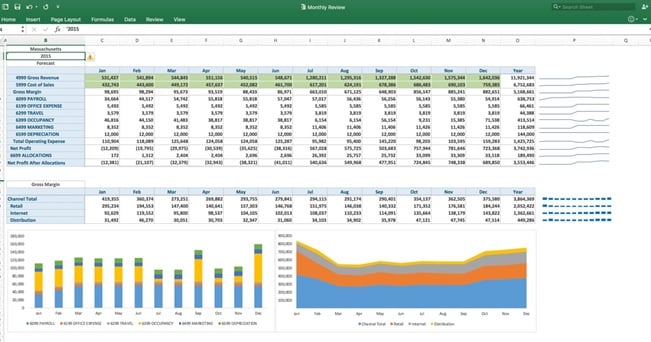IBM Planning Analytics
Finance transformation aims to create a financial analytics solution infrastructure that can unlock significant value across the offices of the chief financial officer (CFO), the chief operating officer (COO) and beyond. Such an infrastructure allows users to easily and readily analyse and manage financially relevant operations and activities. It enables users to:
- work in a self-service mode
- work in (near) real-time when needed, leveraging very high data volumes and data granularity
- coordinate with related upstream and downstream business processes and functions, including Operations, Sales, Marketing, Risk, Treasury and regulatory frameworks
- integrate with hybrid-cloud infrastructure to apply predictive analytics and other cognitive computing methods to unlock further value previously hidden in the data
Make data accessible to the non-technical among us
The need for self-service analysis creates a particular demand on your financial analytics software infrastructure: every user — even non-technical ones — must be able to access the data tier via an easily understandable semantic layer that uses plain language. In other words, the semantic layer needs to map technical and often complex data models to familiar business terms and concepts such as Accounts, Products, Customers, Locations, Regions, Time, Currency, etc. IBM Planning Analytics, by virtue of being an online analytical processing (OLAP) solution platform, provides non-technical end-users with an easily understandable semantic data layer based on cubes, dimensions and hierarchies.
Let users choose the interface they prefer
For analysis and reporting, the semantic layer should be exposed via a Web user interface (UI) as well as, ideally, the familiar Microsoft Excel UI. Web UIs have the benefit of providing convenient, platform-independent access, plus they have a low infrastructure footprint. Meanwhile, Excel UIs provide the most convenient access for both financial and business analysts, simply because Excel is and will likely continue to be their most important and pervasive day-to-day tool.
IBM Planning Analytics Workspace (PAW) is the latest-generation WEB UI for self-service analysis of IBM TM1 data, and for contribution and collaboration in the planning process. In parallel, IBM Planning Analytics for Excel (PAx) is the optional interface that features latest-generation Excel desktop analysis and contribution capabilities for both cloud- and on-premises data sources, and also provides interoperability with PAW.
The need for real-time analysis — against potentially very high data volumes — demands fast performance in real-world scenarios. Ever-changing fact-data, meta-data, master-data and very high data volume should not be a constraint.
IBM Planning Analytics easily meets these demands. It calculates and aggregates data on-demand and hence in real time. It does not store ‘null-values’ (non-populated cells), and it employs parallel processing capabilities to maximize the use of available hardware resources. This means that queries against even billions of new records can be resolved in seconds.
Collaborate across business functions
Last but not least is the need to consider how the planning solution integrates across the organisation. On the operations side, this means enabling collaboration across related upstream and downstream business processes and functions such as Operations, Sales, Marketing and more. On the IT side, it means having a flexible architecture that is compatible with hybrid-cloud infrastructures so you can apply predictive analytics and other cognitive computing methods at scale.
IBM Planning Analytics meets all of these demands. It employs a multi-cube architecture with a shared-dimension model, meaning that it can naturally grow and mature along with your business and your processes. It is available as both a cloud and on-premises solution, and it integrates with best-in-class cognitive computing solutions and analytics platforms, such as Cognos Analytics and SPSS.
If you are interested to see a demonstration of IBM Planning Analytics click on the link below and a member of the team will be in touch to arrange a suitable time.


Share this Article: [DISPLAY_ULTIMATE_SOCIAL_ICONS]